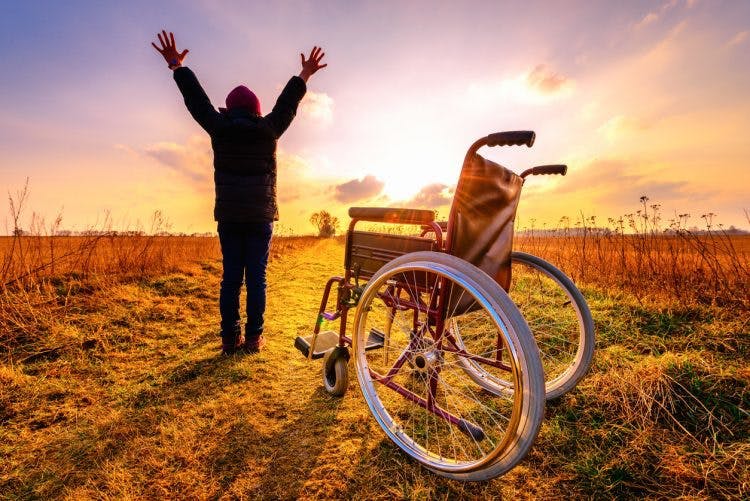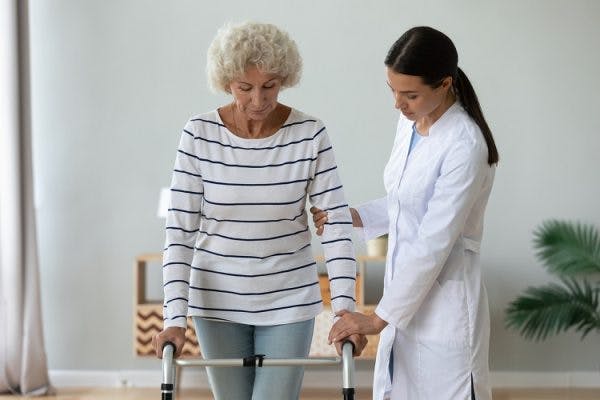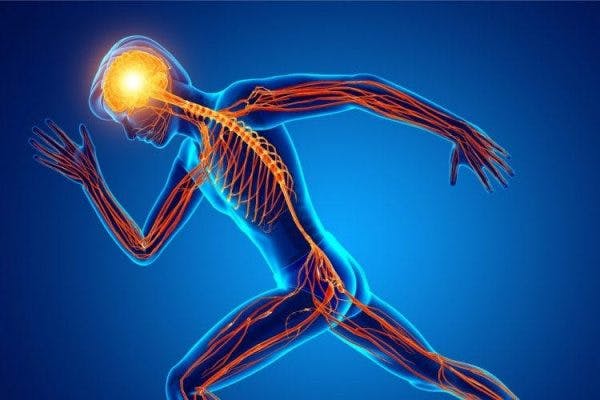For a long time, it was believed that recovery after a spinal cord injury was not possible — but we were wrong. We now know that the spinal cord is extremely adaptable because it is capable of utilizing neuroplasticity.
Neuroplasticity refers to the central nervous system’s ability to rewire its neural circuitry to make adaptive changes. It allows for functions affected by spinal cord injury to be relearned and recovered. However, some conditions must be met for neuroplasticity to occur.
To help you understand how to promote neuroplasticity after spinal cord injury, this article will discuss:
- Can every spinal cord injury patient utilize neuroplasticity to recover?
- How to maximize neuroplasticity after spinal cord injury
- Do neuroplasticity levels change throughout the course of recovery?
Can Every Individual with a Spinal Cord Injury Utilize Neuroplasticity to Recover?

To understand neuroplasticity, it’s essential to understand how a spinal cord injury affects the body. The spinal cord serves as the communication pathway between the brain and body. After a spinal cord injury, that communication is disrupted, which can result in motor and sensory deficits.
Spinal cord injuries can be complete or incomplete. A complete spinal cord injury describes when the spinal cord is completely transected. Consequently, brain signals cannot travel past the damage, resulting in the complete loss of sensation and motor control below the level of injury.
In contrast, an incomplete spinal cord injury describes when the spinal cord is only partially damaged, which leaves spared neural pathways. Because connections between the brain and areas below the level of injury are still intact, individuals may have some motor control and/or sensation below their level of injury.
Spared neural pathways are an essential component of spinal cord injury recovery because damaged neurons in the spinal cord are not capable of regeneration. Instead, only healthy, spared neural pathways in the spinal cord can utilize neuroplasticity to make adaptive changes.
As a result, only individuals with incomplete SCIs have the ability to utilize neuroplasticity to recover functions affected by injury. Treatment for complete spinal cord injuries generally focuses on learning compensatory techniques to be as functional as possible and prevent further complications from developing.
In the following section, we’ll address how neuroplasticity works.
How to Promote Neuroplasticity After Spinal Cord Injury

Neuroplasticity allows the brain and spinal cord to adapt and recover functions affected by injury. The spinal cord can reassign affected functions through spared neural pathways. However, individuals must repetitively stimulate the spinal cord by practicing weakened movements.
Think, “use it or lose it!” Neuroplasticity functions on demand and occurs all the time, not just after injury. It can promote or impede recovery based on how you choose to approach rehabilitation following your spinal cord injury.
Below, we’ll discuss three essential components for promoting neuroplasticity after spinal cord injury: specificity, repetition, and intensity.
1. Specificity
Training specifically is crucial for promoting neuroplasticity after spinal cord injury because each movement you make is attributed to a specific set of neural pathways. Every time you practice a specific movement, it reinforces demand for that function.
Therefore, if you want to recover the ability to walk, you must practice walking. Depending on the severity of your spinal cord injury, you may need to break this up into smaller steps such as strengthening the leg muscles, learning how to stand, shifting your weight, and maintaining balance. Developing these skills individually will help form the building blocks to practice walking again.
The more specific you are with your training, the better the spinal cord gets at perceiving a demand for those functions and rewires itself. Ensuring specific, accurate, good-quality movements is essential, as you don’t want to be promoting adaptation of poor movement patterns.
2. Repetition
Another major factor involved in promoting neuroplasticity after spinal cord injury is performing high repetitions.
Recovering functions affected by a spinal cord injury requires lots of repetition because you’re essentially reteaching your brain, spinal cord, and muscles to work in sync again.
Every time you repeat a movement, you’re strengthening its neural pathways. The stronger the neural pathways become, the easier and more natural the movement becomes.
3. Intensity
Lastly, the intensity of your training helps determine how quickly you recover. Intensity consists of how much resistance, speed, repetitions, time, and effort is put into your recovery.
You want to consistently challenge yourself to stay engaged, but not make the task at hand so overwhelming or frustrating that you want to quit.
Now that you understand how to promote neuroplasticity, let’s discuss the best time to pursue rehabilitation.
Do Neuroplasticity Levels Change Throughout the Course of Recovery?

Following a spinal cord injury, the central nervous system experiences increased neuroplasticity levels for several months as the spinal cord attempts to stabilize itself. This is why individuals often see the most recovery within the first year after their spinal cord injury.
It is recommended to start rehabilitation as soon as possible so that individuals can take advantage of these increased levels of neuroplasticity.
However, it’s also important to understand that the central nervous system never completely runs out of neuroplasticity. While neuroplasticity levels will eventually return to normal, healthy regions of the spinal cord are always capable of making neuroadaptive changes.
As a result, improvements can occur for years after an SCI, as long as individuals continue to pursue recovery.
Understanding Neuroplasticity and Spinal Cord Injury: Key Points
Neuroplasticity is the brain and spinal cord’s ability to rewire its neural circuitry and make neurological adaptations. It allows for functions affected by spinal cord injury to be recovered.
However, because damaged neurons are not capable of healing, only individuals with incomplete SCIs can promote recovery through neuroplasticity.
To optimize the effects of neuroplasticity, individuals must train specifically, repetitively, and intensely. This will help the spinal cord perceive demand for those functions and promote neuroadaptive changes.
While it is often recommended to begin rehabilitation as soon as possible to take advantage of increased neuroplasticity levels after an SCI, the central nervous system never completely runs out of neuroplasticity and is always capable of making activity-dependent adaptations.
We hope this article helped you understand how important neuroplasticity is for spinal cord injury recovery and the best practices to promote it.











